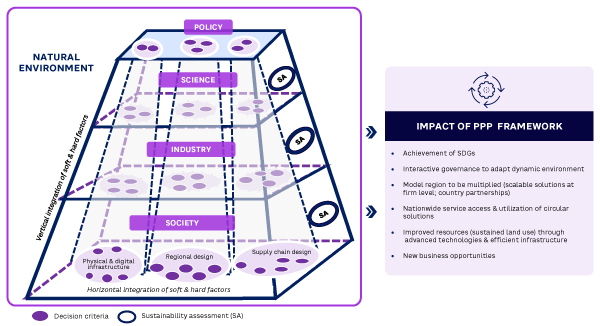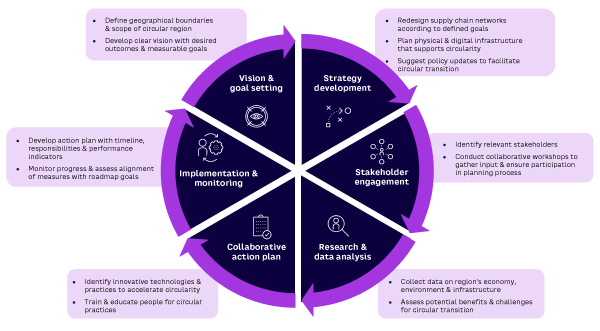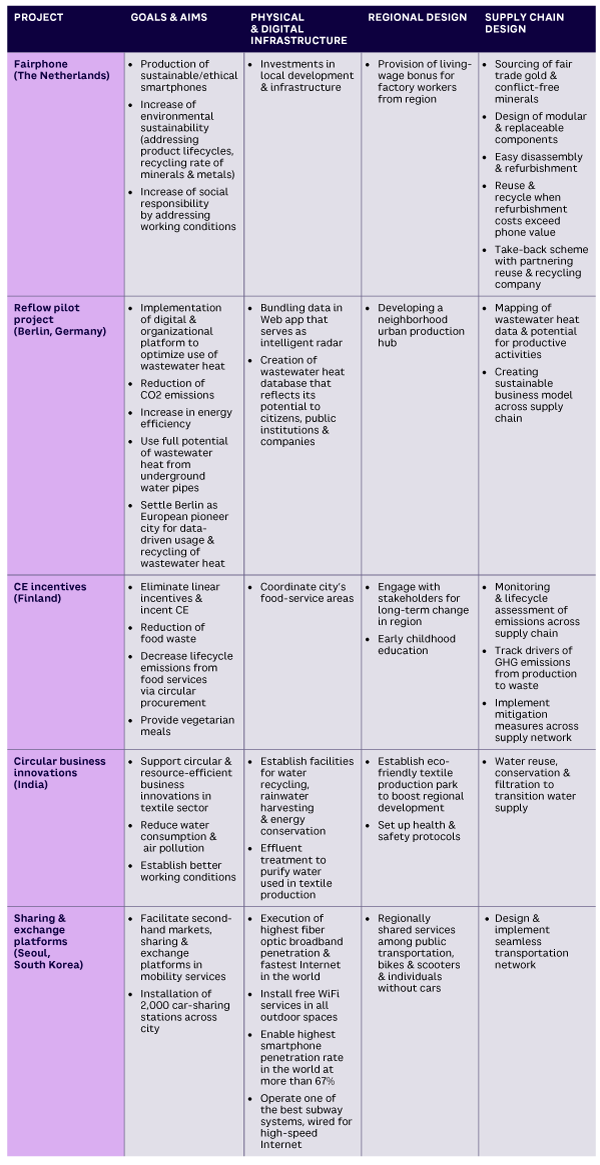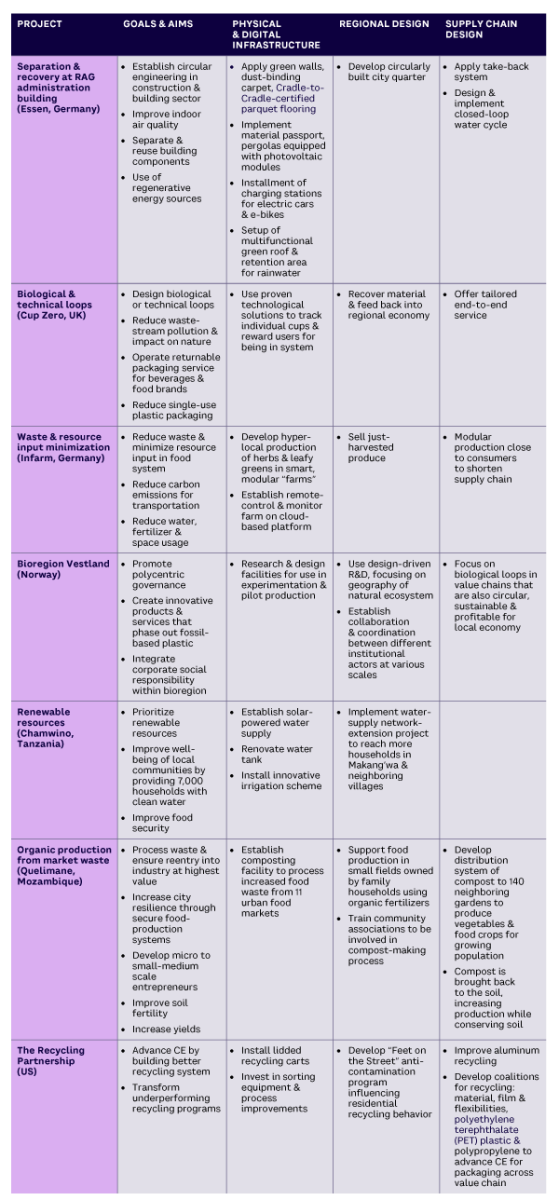AMPLIFY VOL. 36, NO. 10

Climate change, rapid urbanization, resource overconsumption, and shifts in demand patterns profoundly influence economic systems. Economic insecurity, made worse by the pandemic and geopolitical instabilities, will also cause changes in regional development strategies, production and consumption systems, value and supply chain management, and raw material extraction.
Despite progress in materials and resources efficiency, the past few decades have seen a continued rise in material intensity.1 Resource extraction is projected to increase by 119% from 2022 to 2050 (from 90 to 184 billion tons per annum), and greenhouse gas emissions (GHG) are expected to increase by 41%.2
Higher-income nations are responsible for 74% of global resource extraction.3 To combat this situation, the European Commission in 2020 adopted a Circular Economy Action Plan (CEAP) to support achievement of the United Nations Sustainable Development Goals (UN SDGs).4 Part of the European Green Deal, CEAP seeks to reduce the EU’s consumption footprint and subsequently halve the EU’s circular material use rate, while boosting economic growth.5
The plan includes circular economy (CE) strategies to transform regional economic systems by implementing advanced digital technologies, societal changes, and behavioral changes, as well adoption of CE practices and laws in public-private partnerships (PPPs). CEAP focuses on sectors that depend on infrastructure, use the most resources, and have the greatest circularity potential, including steel and aluminum production, construction and building, textiles, batteries and vehicles, food systems, logistics and packaging, and information/electronics/communications. Understanding varying investment priorities across countries and regions and their implications for organizations and their supply chains is needed for circular transformation.
Efficient circular transformation strategies can be developed and implemented through improved cooperation among science, industry, government, civil society, and the natural environment, known as the “Quintuple Helix.”6 Better instruments for making sound industrial and political decisions within complex and dynamic socioeconomic systems must be developed.
Circular transformation strategies included in the EU Green Deal are based on the assessment of low carbon-growth potential: carbon-pricing systems, green technology policies, infrastructure development, and the removal of barriers to behavioral change. Carbon pricing can be achieved via governmental instruments and political frameworks, but behavioral change can be reached only by empowering local authorities and communities, grassroots organizations, industrial leaders, and civil society.
Collaborative strategies for industries to accelerate transitions toward net-zero carbon are discussed in theory. However, there is still a gap between theory and practical implementation of collaborative CE approaches.
A wide span of costs for resource-efficiency measures and varying levels of return make CE investment difficult. This situation highlights the need for: (1) financial and regulatory incentives for circular business models and (2) risk assessment for collaborative strategies. Despite the risks associated with developing and implementing collaborative strategies for transforming circular regions, PPPs with innovative funding mechanisms play a critical role in designing, implementing, and advancing circular regions. These collaborations facilitate knowledge sharing, resource mobilization, innovative co-funding mechanisms, and coordinated stakeholder action, enabling the development of holistic, effective CE-enabled environments.
Multi-Stakeholder Framework for Collaborative CE Transformation
This article introduces a collaboration framework for CE transformation that identifies key tangible (soft) and intangible (hard) factors that can be vertically and horizontally integrated. Horizontal integration occurs across the design of physical and digital infrastructure, regional development strategies, and supply chain governance. Vertical integration occurs across policy, science, industry, and society, each interacting with the natural environment (see Figure 1).
In other words, for circular regional transformation, the three horizontal aspects must be designed and implemented in a collaborative way; take place across society, industry, science, and policy; and be embedded in the natural environment.

The framework integrates soft (environmental awareness, education) and hard (data analytics, infrastructure) factors, both of which must cover both social and technical aspects of CE transformation. Sustainability assessment and decision support systems should only be developed after this collaborative framework is built (later in the article, we outline the steps necessary for a region to holistically transition toward circularity).
Tables A and B at the end of this article show best-practice examples in a variety of sectors (electronics, construction, food services, textile industry, and transportation) based on the CE collaborative framework. Each case describes initiatives that align with CE principles, such as designing for durability and reuse, closing resource loops, prioritizing renewable resources, facilitating sharing platforms, and processing waste for reentry into industry.
Tables A and B also outline real-world examples of organizations and communities implementing actions to transition away from linear take-make-waste models toward more sustainable and circular resource management. Their actions are classified into the three categories: (1) physical and digital infrastructure, (2) regional design, and (3) supply chain design.
One of the best examples of circular region transformation is the territorial cluster of Southeast Lower Saxony. It was the first German region accepted in the Circular Cities and Regions Initiative (CCRI) of the EU in September 2022 because it created an almost-complete industrial chain — from raw materials to the fabrication of high-tech products.7
Businesses, trade organizations, public corporations, politicians, nongovernmental organizations, and members of civil society came together to develop a region for “circular production and use.” This includes a professional network of citizens playing a key role in the cascaded use of products, giving them a second life after the first one and before final recycling.
Collaborative Action Plan for Circular Transformation
Figure 2 shows actions to be taken collaboratively for a holistic circular transformation, combining various aspects of physical and digital infrastructure with regional and supply chain design. It shows a shared vision in which diverse stakeholders make investment decisions while ensuring transparency, accountability, and monitoring the implementation of an effective circular transition.

Implementing CE practices almost always requires collaboration among various stakeholders along the value chain. Sharing knowledge and innovation improves business processes, products, and services and has the potential to open new markets and revenue streams and create new partnerships.
However, there are several challenges that can arise during the transition:
-
Ensuring that all stakeholders share a common vision for the circular transition and commit to it can be difficult, especially when interests and priorities vary.
-
The pricing system differs between public and private sectors, as well as across various industries.
-
When policymakers are not on board, policies and regulations may hinder the adoption of circular practices. Even if political support is given, funding and resources may be limited, requiring careful prioritization and innovative financing mechanisms.
-
Integrating new technologies and practices into existing systems and industries can be a complicated, costly endeavor. The complexities and myriad trade-offs during the transition make establishing accurate, consistent metrics for circularity and tracking the transition progress a complex procedure.
-
Convincing the broader society of the benefits and necessity of a circular economy may require extensive public-awareness campaigns and/or streamlined education.
A Way Forward
This article discusses the important role that stakeholders from policy, science, industry, and society play in collaborative circular transformations, either as beneficiaries or through direct contributions, active support, and engagement. The success of these initiatives relies on collaboration with a diverse range of financing sources, including impact investors, traditional investors, public funding, banks, and venture capitalists. Note that impact investing fosters measurable, positive social and environmental outcomes alongside traditional financial returns.
Securing financial support from various channels is essential for successful sustainability projects. Government agencies provide guidelines and funding opportunities while creating regulatory conditions for businesses and communities, and businesses cooperate with governments to ensure alignment with regional and national sustainability policies. Both established companies and start-ups are needed for implementing and scaling CE projects, providing technical solutions, manufacturing knowledge, and specialized expertise in areas like electronics, textiles, urban mobility, construction, packaging, and agriculture.
The interdisciplinary nature of CE initiatives calls for partnerships with various areas of expertise. Because of their engagement in R&D, research institutions and universities contribute the scientific foundation of these solutions, fostering technological advancements and environmental assessments. They also provide educational support, which is crucial for CE projects. The societal dimension of CE projects (e.g., providing feedback and participating in data collection) is another key dimension, since citizens are often the beneficiaries of CE initiatives.
Our action plan outlines the necessary steps for a region to holistically transition toward circularity, overcoming challenges while reaping social, environmental, and economic benefits.


References
1 Rockström, Johan, and Mattias Klum. Big World, Small Planet: Abundance Within Planetary Boundaries. Yale University Press, 2015.
2 Geng, Yong, Joseph Sarkis, and Raimund Bleischwitz. “How to Globalize the Circular Economy.” Nature, Vol. 565, January 2019.
3 ”High-Income Countries Are Responsible for 74 Percent of Excess Resource Use Causing Ecological Breakdown.” The London School of Economics and Political Science, 6 April 2022.
4 ”Sustainable Development Goals.” United Nations (UN), accessed October 2023.
5 “Circular Economy Action Plan.” European Commission, accessed October 2023.
6 Carayannis, Elias G., Thorsten D. Barth, and David F.J. Campbell. “The Quintuple Helix Innovation Model: Global Warming as a Challenge and Driver for Innovation.” Journal of Innovation and Entrepreneurship, Vol. 1, No. 2, August 2012.
7 “Circular Cities and Regions Initiative: Supporting Europe’s Circular Economy at Local and Regional Level.” European Commission, accessed October 2023.






